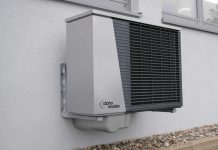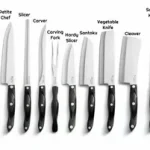When it comes to industrial operations, mobility matters. From manufacturing floors to distribution centers, the right caster and wheel system can influence not only the ease of transport but also safety, productivity, and equipment longevity. This comprehensive guide explores the critical factors businesses should consider when selecting wheels for industrial applications.
Understanding Wheel Types and Their Core Differences
Before diving into tradeoffs and recommendations, it’s important to define the key wheel types available for industrial use:
- Steel wheel: Durable, high-load capacity, excellent for extreme environments
- Rubber caster wheels: Quieter and better on uneven surfaces, but wear faster
- Pneumatic wheels: Air-filled or foam-filled, offering cushioning and shock absorption
Each of these wheels serves a different purpose. Selecting the right one depends on factors such as load requirements, surface type, noise sensitivity, and environmental conditions. In many cases, 6 inch casters provide the optimal balance of maneuverability and weight-bearing capacity, especially for mid-sized carts and mobile workstations.
Tradeoffs: Durability vs. Floor Protection
Industrial environments often demand strong, long-lasting components. Steel is a natural choice for durability but can damage floors and produce more noise. On the flip side, rubber or thermoplastic elastomer wheels are softer and reduce vibration but are more susceptible to wear and tear.
- Durable options: Metal-based wheels (e.g., forged, ductile iron)
- Floor-friendly options: Rubberized or polyurethane-based options
The tradeoff comes down to your operating environment. For example, a steel wheel might perform flawlessly in a steel-fabrication shop but may be overkill—and damaging—in a clean packaging facility with delicate flooring.
Load Capacity and Distribution Requirements
Load is one of the most crucial deciding factors in choosing a wheel. Heavier loads typically require harder wheels and wider treads. However, that often comes at the cost of maneuverability or surface damage.
| Load Range | Recommended Wheel Material | Key Consideration |
| Light (<300 lbs) | Rubber or plastic blend | Quieter and easier on the floor |
| Medium (300–800 lbs) | Polyurethane or TPR | Balanced durability |
| Heavy (>800 lbs) | Forged steel or metal core | May require reinforced floors |
Terrain and Surface Conditions
What kind of floor will the wheel be rolling on? Uneven or outdoor surfaces demand a very different type of wheel than smooth epoxy flooring. Here’s a breakdown:
- Concrete or warehouse floors: Best with hard wheels (e.g., phenolic, cast iron)
- Uneven outdoor terrain: Requires cushioning; this is where pneumatic-style tires excel
- Cleanroom or anti-static environments: Polyurethane or thermoplastic rubber with anti-marking properties
Environmental Conditions
Temperature fluctuations, moisture exposure, and chemical resistance should not be overlooked. For example:
- Cold storage: Rubber hardens, making polyurethane or thermoplastic rubber preferable
- High heat: Consider metal or specialized heat-resistant polymers
- Oil/chemical exposure: Choose chemically-resistant wheels like polyurethane or stainless steel components
Maneuverability: Size, Swivel Radius, and Tread Shape
Wheel diameter affects both ease of movement and load capacity. A larger diameter wheel rolls more easily over obstacles, but might be more cumbersome in tight spaces.
- Larger wheels (6”–12”): Easier to move, handles rough surfaces well
- Smaller wheels (<6”): More compact, fits confined equipment
Tread shape matters too. Flat treads are more stable, while crowned treads are easier to turn. The swivel radius of the swivel casters also determines how tight the turning circle will be. Too small, and you may sacrifice stability. Too large, and turning becomes inefficient.
Ergonomics and Safety Concerns
A key consideration for many facilities today is reducing operator fatigue and risk of injury. Harder wheels may require more effort to push, especially when moving loads over longer distances. Softer or ergonomic tread designs can minimize strain but may not hold up as well under constant heavy use.
Some modern wheels are designed specifically for ergonomic performance:
- Ball-bearing hubs for smooth rolling
- Anti-vibration materials
- High-rebound polyurethane for easier push force
Maintenance and Lifecycle Costs
While upfront cost matters, maintenance and long-term performance are equally vital. A cheaper rubber wheel may wear out quickly, requiring frequent replacements and downtime.
Key maintenance factors include:
- Debris accumulation
- Tread wear
- Bearing lubrication
- Swivel component wear
Frequent use in dirty or outdoor environments demands more robust and maintenance-tolerant wheel systems. Higher-quality wheels with sealed bearings may carry a higher initial cost but save more over time.
Regulatory and Industry-Specific Compliance
Certain industries must meet regulatory standards regarding materials and equipment:
- Healthcare: Non-marking, antimicrobial, and easy-to-clean wheels
- Food service: Stainless steel components, NSF-certified models
- Electronics: Anti-static or conductive wheels
Failing to consider these details could not only reduce operational performance but lead to compliance issues or fines.
Alternatives and Hybrid Solutions
Sometimes, no single wheel material or size checks every box. That’s where hybrid wheels come into play:
- Rubber tread on a metal core: Improved durability with softer roll
- Poly-on-iron: A polyurethane tread molded to an iron core
- Foam-filled pneumatics: Cushion without the risk of air loss
These designs aim to deliver the benefits of one material while minimizing the drawbacks of another. The tradeoff is usually price and slightly increased weight.
When to Re-Evaluate Your Wheel System
Over time, even the best wheel system can become less effective due to:
- Load increases from operational growth
- Changes in flooring type or condition
- New safety or ergonomic initiatives
Signs you may need to change your wheel system include:
- Noise complaints from staff
- Increased equipment strain or damage
- Frequent wheel replacements
Re-evaluation every 12–24 months is generally advisable for high-use facilities.
Conclusion: Making the Right Call
Selecting the ideal wheel system is not a one-size-fits-all decision. Businesses must weigh several factors including load, surface, maneuverability, environment, and long-term value. While a steel wheel might be perfect for a heavy-duty application, it’s not suitable for every context. Similarly, rubber caster wheels might be quieter and easier on the floor but may fall short in durability. If your operation includes outdoor transport, pneumatic wheels might be the right fit, despite their maintenance needs. And if you’re considering upgrading or customizing components, understanding the importance of a precision-engineered caster mold is crucial to ensure consistency and safety.
By carefully evaluating these variables and involving input from operations, safety, and maintenance teams, businesses can arrive at a solution that improves productivity, reduces risk, and fits the budget.
Want help determining which wheel type is right for your business? Consider consulting a mobility solutions expert to tailor a system specific to your application.










